Are you a fan of red berries?
Whether you are a gardening enthusiast who likes rare flowers and looking for the best to grow in your little piece of green heaven in your backyard or just an ardent red berry lover, being curious about the various types is normal.
So, if you are a complete amateur in berries, no worries; we have got you covered.
We will discuss different types of red berries in detail, along with pictures for your understanding.
There are two broad categories of red berries: one on trees and the second on shrubs.
The brilliant contrast of the rich red color against the bright green gives your garden a gorgeous look that can make your neighbors jealous.
Recognizing the different types of red berries is usually done by checking and analyzing the kind of leaves the shrub or tree has, the shape, texture, and colors of the flower, and, obviously, the trunk.
Now that the basic idea of red berries is identification clear, let us talk about the different types of red fruit berries:
Types of Red Fruit Berries
1. Snake Berries (Duchesnea indica)
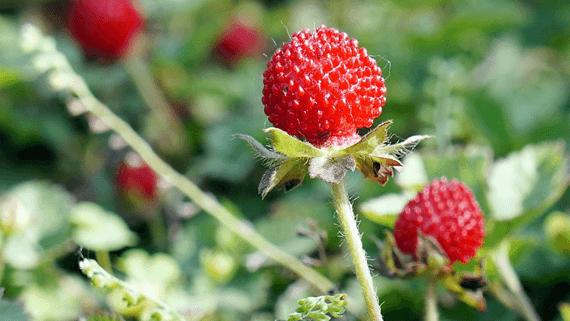
Having the look and texture of a real strawberry, snake berries are often called Indian strawberries and mock strawberries. However, they are not actual berries.
The red and white fruit produced looks like a berry and is edible.
It is a perennial herb producing a fruit with a fleshy, juicy texture and sweet taste.
Being a perennial herb, it has several medical benefits and can be used in treating skin diseases with its natural healing power. It also treats issues like body pain, inflammation, heart disease, etc.
One thing that should be remembered is that no amateur should use it for treatment purposes without expert supervision. The berries can be toxic to your body if they are not used in proper quantities.
Gardening Tip: Thrive in moist, well-drained soil and partial shade. They’re low-maintenance, but watch for spreading.
2. Red Chokeberry Bush (Aronia Srbutifolia)
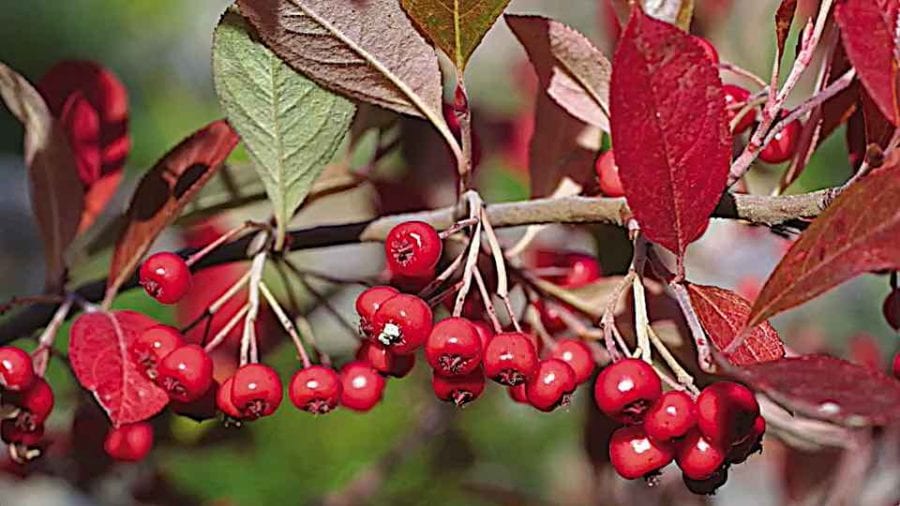
A tall shrub with multiple stems and many white flowers, these shrubs produce the glossiest and prettiest berries ever. The shrub grows best in moist soil, but once it has established its root and started growing, it can survive moderate dryness.
Ensure you keep it in a place where it receives moderate sunshine without drying out the soil.
The fleshy red berries covered in oval leaves give your garden a spectacular look and are edible (only with lots of sugar).
Gardening Tip: Plant in acidic to neutral, well-drained soil. Prefers full sun to partial shade and can tolerate some drought.
3. Barberries (Berberis)
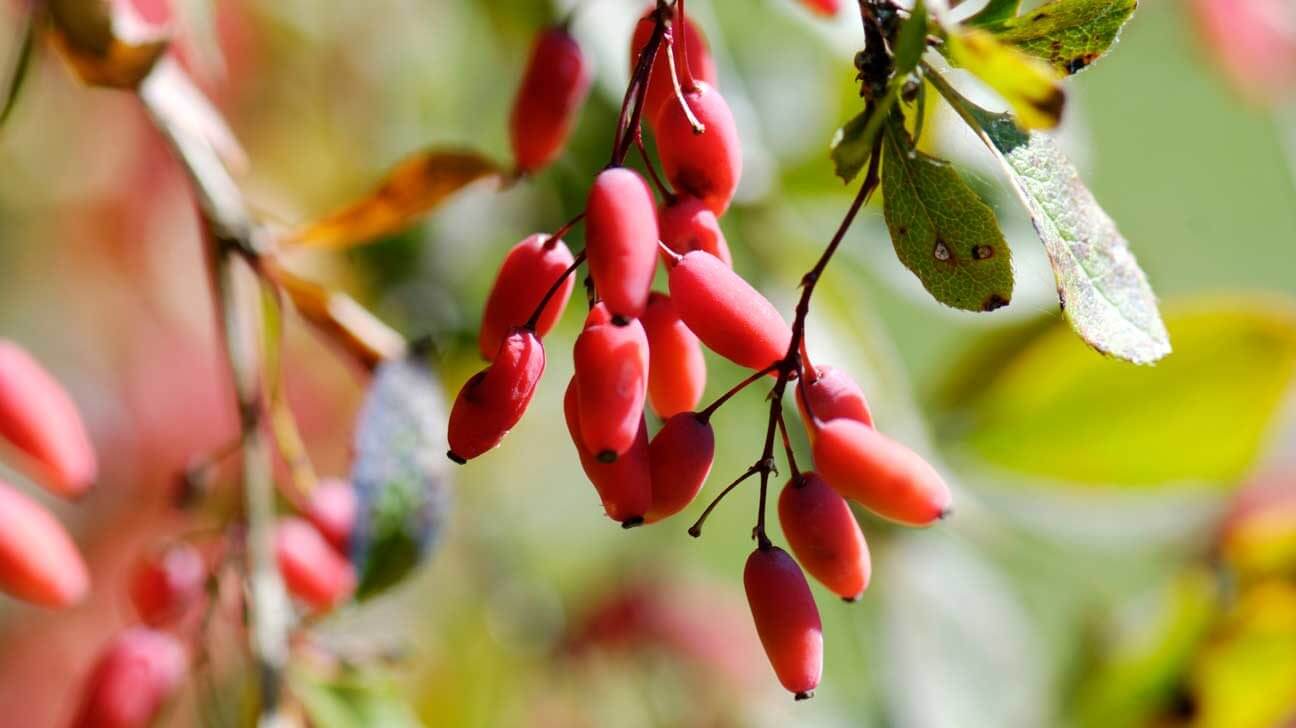
You might not already know this, but this is one of the favorite berries among several people.
Do you want to know why? Because this berry is widely used to make jams and jellies. Besides its delicious, sweet taste, this berry is known for its medicinal properties.
Being an herb in nature, they are known to treat various digestive disorders like heartburn, constipation, and diarrhea and are also known to reduce blood sugar levels, cholesterol, and PCOD.
Coming to its edibility, apart from jam and jellies, you can also consume them with wine, tea, or sauce.
They also serve as an excellent substitute for raisins and cranberries.
Gardening Tip: Best in full sun for more vibrant fruit. Requires well-drained soil and occasional pruning to maintain shape.
4. Redcurrants (Ribes rubrum)

Here is another shrub berry. These summer berries with pulpy, fleshy texture give you a mild taste and are a combination of black and white currant.
It’s not too robust but a little tart than white currant. Apart from their delicious taste and magnificent look, they are ideal for your health.
Being rich in antioxidant properties, vitamins C and K, and potassium, it keeps your skin and heart healthy and fit.
Gardening Tip: Plant in a sheltered spot with rich, well-drained soil. Prune regularly for good air circulation and fruit production.
5. Red Gooseberry (Ribes uva-Crispa)
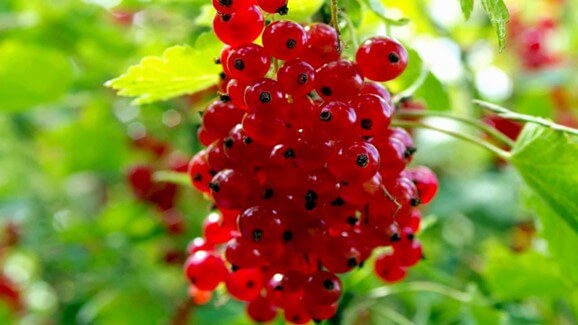
Gooseberries have a unique taste, a blend of sweet and tart combination, good enough to tease your taste buds. Produced in a gorgeous ruby-like shiny red, these berries are excellent for making pies and jams.
This shrub grows best in well-drained and partially sandy soil with moderate exposure to sunlight.
So, if you want something tasty and pretty to make your garden look amazing, red gooseberries are undoubtedly a great choice!
Gardening Tip: Needs well-drained, fertile soil. Prune annually and watch for pests like gooseberry sawfly.
6. Pin Cherries (Prunus pensylvanica)

Growing on wild bushes and shrubs, they look like black cherries. If you look at their leaves and bark, they look very similar, but one thing that differentiates them is the pin cherry’s flowers and fruit.
The beautiful white flowers come in clusters on the branch, and from the flowers, each pin cherry grows out again in clusters and ripens somewhere between July and August.
Gardening Tip: Prefer sandy, well-drained soil and full sun. Prune to encourage air circulation and prevent disease.
7. Bittersweet Nightshade (Solanum dulcamara)
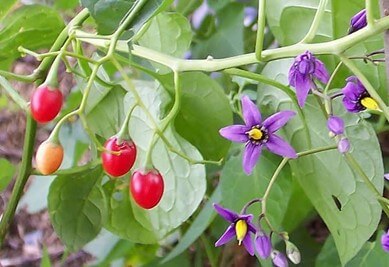
Before you even begin reading about these red fruit berries, let us warn you that you should be careful about planting them in your garden and ensure your kids keep their distance.
Although the gorgeous red cherries look spectacular in your garden, the berries are toxic.
The extract from these berries is used for various medical purposes, but raw berries can be poisonous.
Apart from that, the pretty berries and the beautiful Pink-purple flowers are all why you should consider opting for it.
Gardening Tip: Grow in fertile, moist soil. Needs regular pruning to control growth and prevent spreading.
8. Cotoneaster (Cotoneaster)

Cotoneasters are winter berries growing on evergreen shrubs with four broad types: cranberry cotoneaster, bearberry, hedge cotoneaster, and spreading cotoneaster.
Caring for a cotoneaster shrub is basic. All you need is well-drained soil, moderate sunlight, and moderate watering.
They can do fine without regular fertilizers.
But again, these red berries only look good on the outside, and you should certainly not consume them because they are highly poisonous.
Gardening Tip: Plant in well-drained soil with full sun to partial shade. Water regularly and prune to shape.
9. Hobblebush (Viburnum Lantanoides)
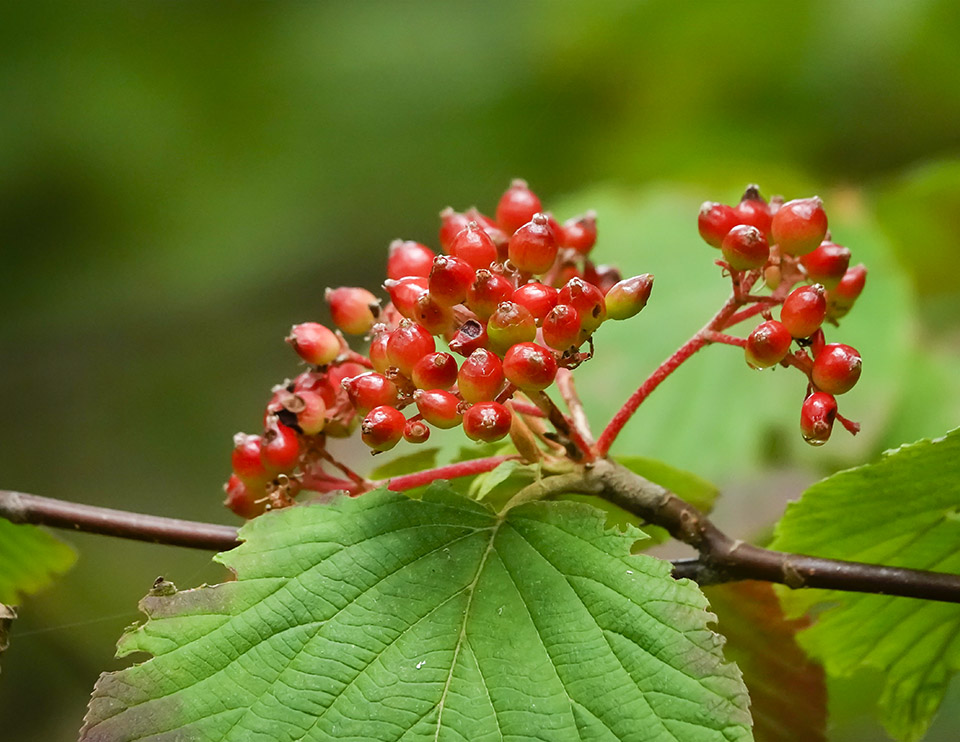
If you are looking for a pretty and edible berry, here is another excellent option.
Hobble bush, also known as moosewood or witch hobble, is again a perennial shrub.
With its large oval leaves that give way to beautiful flowers followed by red berries, this is also the right choice for your garden.
The berries turn black as they ripen, and they are said to have a delightful taste, like dates and raisins.
Gardening Tip: Prefers moist, acidic soil in partial shade. Mulch to retain moisture and protect roots in winter.
10. Tatarian Honeysuckle Bush (Lonicera Tatarica)

A deciduous shrub, the Tatarian honeysuckle bush grows out with multiple stems and large oval leaves in a blue-green shade.
They produce charming red or pink flowers that grow along with the leaves from the axil.
Red berries with a fleshy texture follow the leaves.
However, it is recommended not to plant them in your garden because their growth becomes difficult to control, and it can damage the growth of all the other plants you have in your garden.
Gardening Tip: Grows in a variety of soils. Prune regularly to control invasive growth.
11. Winterberry (Ilex verticillata)

Another deciduous shrub with bright red cherries. The plant grows to a height of 3-15 feet.
The leaves are in a dark green shade, placed elliptically, and about 2-3 inches long. The bright red cherries are again toxic to humans and animals, so ensure you do not consume them even by mistake.
It can grow in a variety of conditions if it receives enough moisture.
They also need partial to full sunlight daily to thrive and grow well without additional fertilizers.
Gardening Tip: Needs acidic, well-drained soil. Plant in full sun to part shade and ensure consistent moisture.
12. Cornellian Cherry Dogwood (Cornus mas)
It is a small tree that grows to a height of 2- to 25 feet. These trees thrive best in well-drained soils.
They produce bright yellow flowers that grow in clusters and charmingly adorn the entire tree even before the leaves come out.
The leaves are dark green in the shade with distinct veins and oval. The tree produces clusters of rich red berries that usually ripen towards the end of summer.
The best part about these berries is that they are edible and can be used to make jams, jellies, and pies.
Gardening Tip: Prefers well-drained soil, full sun, and partial shade. Water deeply and mulch to maintain moisture.
13. Peruvian Pepper (Schinus molle)

As the name suggests, this evergreen tree produces bright red cherries with a peppery taste.
Other names like the American pepper, false pepper, or the pepper tree also know it.
The tree is distinguished by its fern-like leaves that produce small white flowers that become red berry-like fruits with a peppery taste and many seeds.
This plant is mostly found in places with a hot, arid climate.
The fruits from this tree are generally safe for consumption, but it is recommended that children do not eat them because these fruits might upset their stomachs.
Gardening Tip: Best in dry, well-drained soil, full sun. Drought-tolerant once established.
14. American Holly Tree (Ilex opaca)
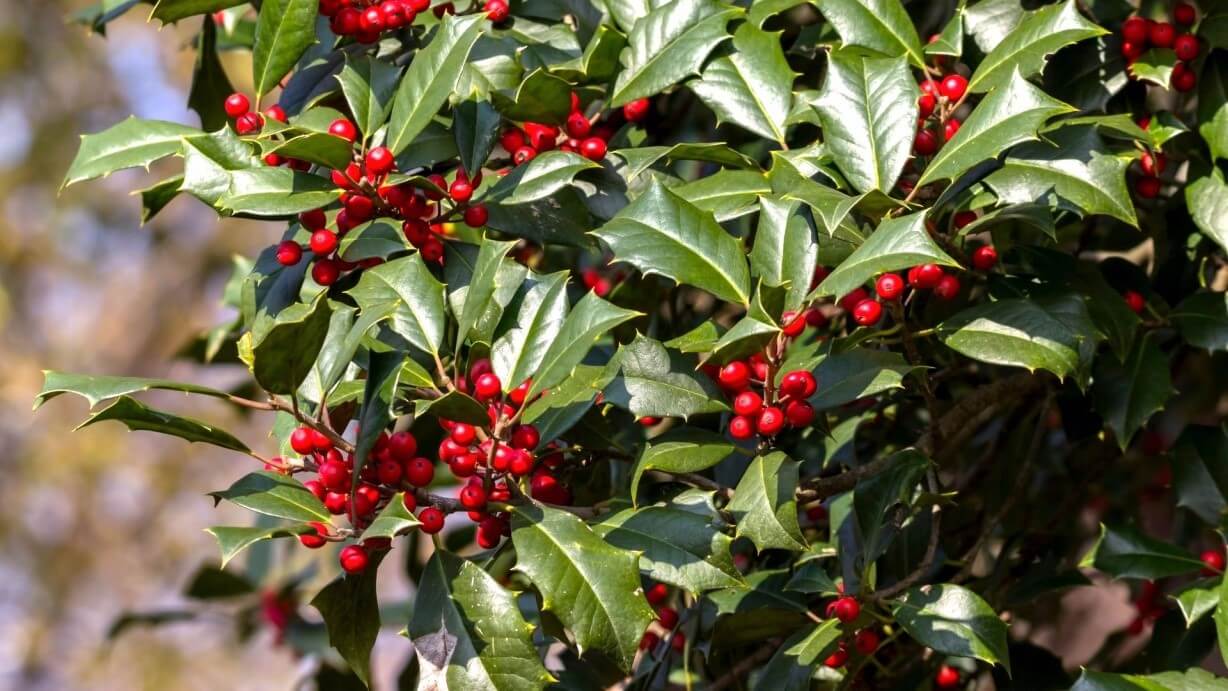
This broad-leaved evergreen tree is most famous for its striking red cherries and dark green leaves with a leathery texture and pointed tips.
The trees grow in a pyramidal shape and grow very tall, ranging from 6 to 15 meters.
Caring for an American holly tree is very easy. All you need is to keep it in moist soil and protect it from the cold, chilly winds.
Water them moderately, and you will be good to go. The best part is they do not fall prey to pests that easily.
Gardening Tip: Plant in well-drained, slightly acidic soil. Needs regular watering and protection from wind.
15. Red Berry Mistletoe (Phoradendron rubrum)
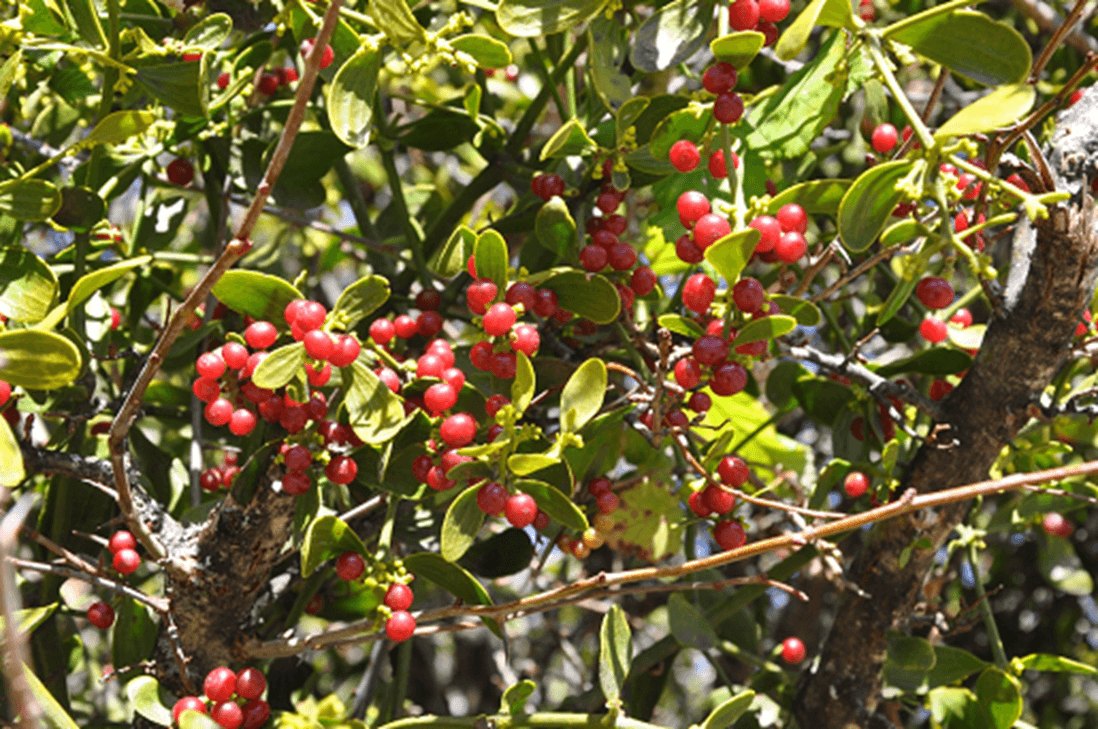
Redberry mistletoe is a type of mistletoe that belongs to the family Santacalacea.
The plant has several small green leaves and is well known for its strikingly gorgeous red berries.
However, it would help if you remember that these berries might look great from the outside but are fatal for your health.
They are extremely poisonous to humans. On the contrary, they are entirely harmless to birds. The birds eat the fruits and help disperse the red berries’ seeds.
Gardening Tip: Prefers well-drained soil and partial sun. Water regularly during dry periods.
16. Hawthorn Tree (Crataegus)
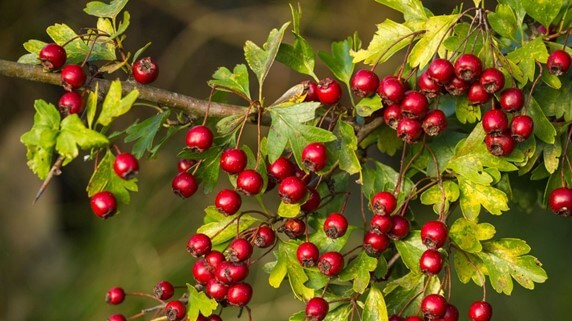
The best-known use for this plant and its berries is for medicinal purposes.
They help treat various diseases, especially those related to your heart, like blockage and high blood pressure.
As mentioned, its medicinal properties are evident; it is also edible and not harmful.
Apart from its health benefits, the light green leaves contrast the pretty red cherries that will make your garden look 100 times better and prettier.
Gardening Tip: Plant in well-drained soil, full sun. Water deeply and mulch to retain soil moisture.
17. Buffalo Berry (Shepherdia argentea)

This is one of the toughest berry plants. Immune to extreme cold weather and capable of fighting against drought. These berries are rich in vitamin C and antioxidants.
The berries grow on small plants or shrubs that are dioecious, which means that they have both male and female reproductive organs.
The trees produce small white-yellow flowers that give way to bright red berries.
In the beginning, around late summer, they are a little tart, but as time goes on and they ripen, they become sweeter.
They can make delicious jellies and are exceptionally tasty when eaten dried, fresh, or cooked in desserts or other dishes.
Gardening Tip: Tolerates a range of soils and prefers full sun. Drought-resistant once established.
18. Butcher’s Broom (Ruscus aculeatus)
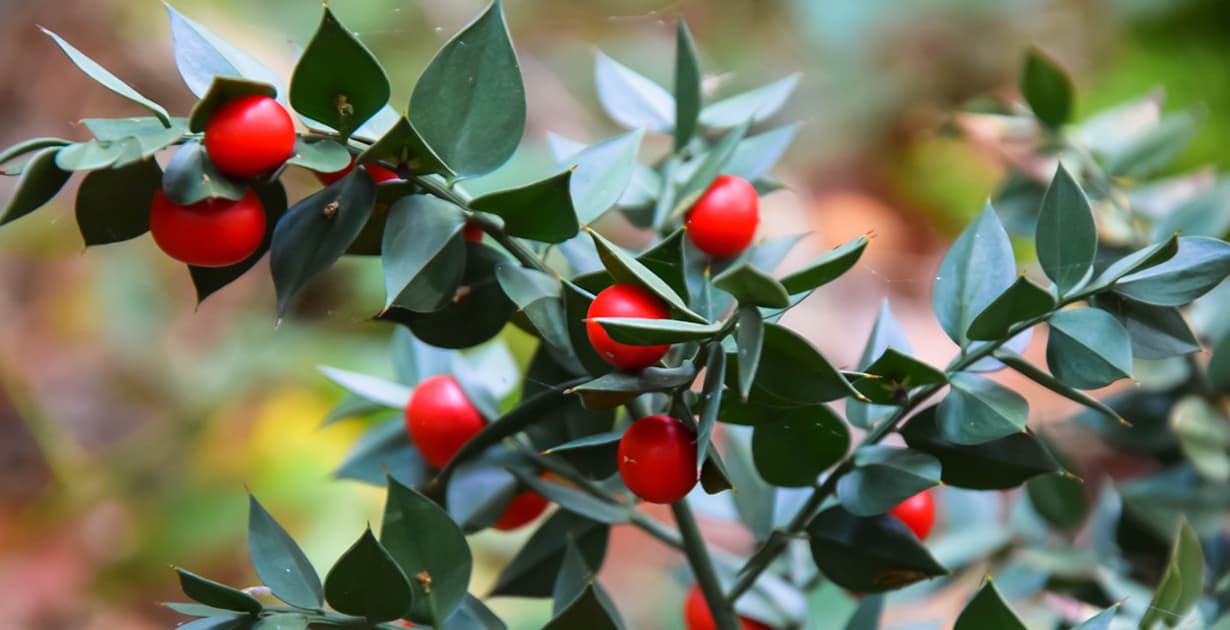
A small evergreen shrub with dark green leaves produces bright red cherries with a fleshy texture. Butcher’s broom has been used in herbal medicines for ages.
Its best known for treating inflammation, poor blood circulation, and hypotension.
The plant, a member of the lily family, has short, spiny leaves and red cherries.
However, there is one thing that you should keep in mind when it comes to butcher’s brooms: Although they are used for medicinal purposes, one should not consume them directly.
They are not just toxic but can also harm your digestive system.
Gardening Tip: Thrives in partial shade, well-drained soil. Water regularly and mulch to retain moisture.
19. Raspberries (Rubus idaeus)

Speaking of red berries and not mentioning raspberries is not possible.
Popularly known for the sweet, juicy berries with a soft, pulpy texture, raspberries are also rich in Vitamin C and E, antioxidants, and several other minerals that are very useful for your body.
Apart from the sweet, delicious taste and the minerals and vitamins, they also serve several health benefits like helping with diabetes, preventing cancer, promoting your eyes’ health, and preventing cancer.
Remember that there are several types of raspberries, including black, purple, and golden, but here we are explicitly talking about red raspberries.
Gardening Tip: Need fertile, well-drained soil and full sun. Support with trellises and pruning old canes.
20. Spindles (Euonymus europaeus)
Scientifically known as Euonymus Europaeus, it is a small shrub known for its red cherries and flowers.
It grows best in well-drained soil with moderate sunlight. The bark is grey with simple leaves on opposite sides that have texture.
The gorgeous pink flowers give way to the fruit, which is green in color and then becomes deep pink to red as they gradually ripen.
The inside of the fruit has a deep orange-red fleshy texture with multiple seeds, and just like many other cherry plants, they are known for their medicinal properties.
Gardening Tip: Prefer well-drained soil, full to partial sun. Prune to control size and shape.
21. Strawberries (Fragaria × ananassa)

Of course! Although we wanted to start the list with less popular and rare kinds of cherries, you probably do not know how a list of types of red berries can ever be completed without mentioning strawberries.
The popular fruit is grown on perennial herbaceous plants. The fruit is rich in Vitamin C and has a laxative effect.
Easy to digest and attractive with its dark reddish color, it is often eaten with yogurt, ice cream, chocolate, and cereals.
They are usually harvested in the summer, low in calories, and rich in Vitamins; they are undoubtedly great for your health.
Gardening Tip: Require rich, well-drained soil and full sun. Ensure regular watering, especially during fruiting. Mulch to retain moisture and control weeds.
22. Elderberry (Sambucus)

Growing on a large deciduous shrub and being part of the honeysuckle plant family, elderberry produces large clusters of bright red berries with a very fleshy and juicy taste and lots of seed.
The leaves are dark green in an oval shape, have a leathery texture, and are opposite each other.
The foliage has a very distinctive and robust odor to itself. They can be grown on various soils, but they grow better in loamy soil rich in nutrients and prefer full exposure to the sun.
Although they require soil with a fair amount of moisture to bloom the best, it also requires proper drainage to avoid water stagnation.
Gardening Tip: Plant in nutrient-rich, loamy soil, full sun. Water regularly, especially in dry periods.
23. Nanking Cherry (Prunus tomentosa)

The Nanking cherries are fast growers that start producing fruits within two years of being planted.
The trees grow to a height of 15 ft and spread rapidly in width to the extent that they need time to trim.
They produce beautiful pink buds that turn white as they bloom into flowers. The flowers give way to the dark red berries with a tart-like taste and are edible.
The fruits usually ripen between July and August. However, their concise shelf life makes them undesirable for commercial use.
However, even commercially, they are still used for making food items like pies, juice, syrups, and wine.
Gardening Tip: Thrive in well-drained soil, full sun. Prune annually to maintain health and shape.
24. American Bittersweet (Celastrus scandens)
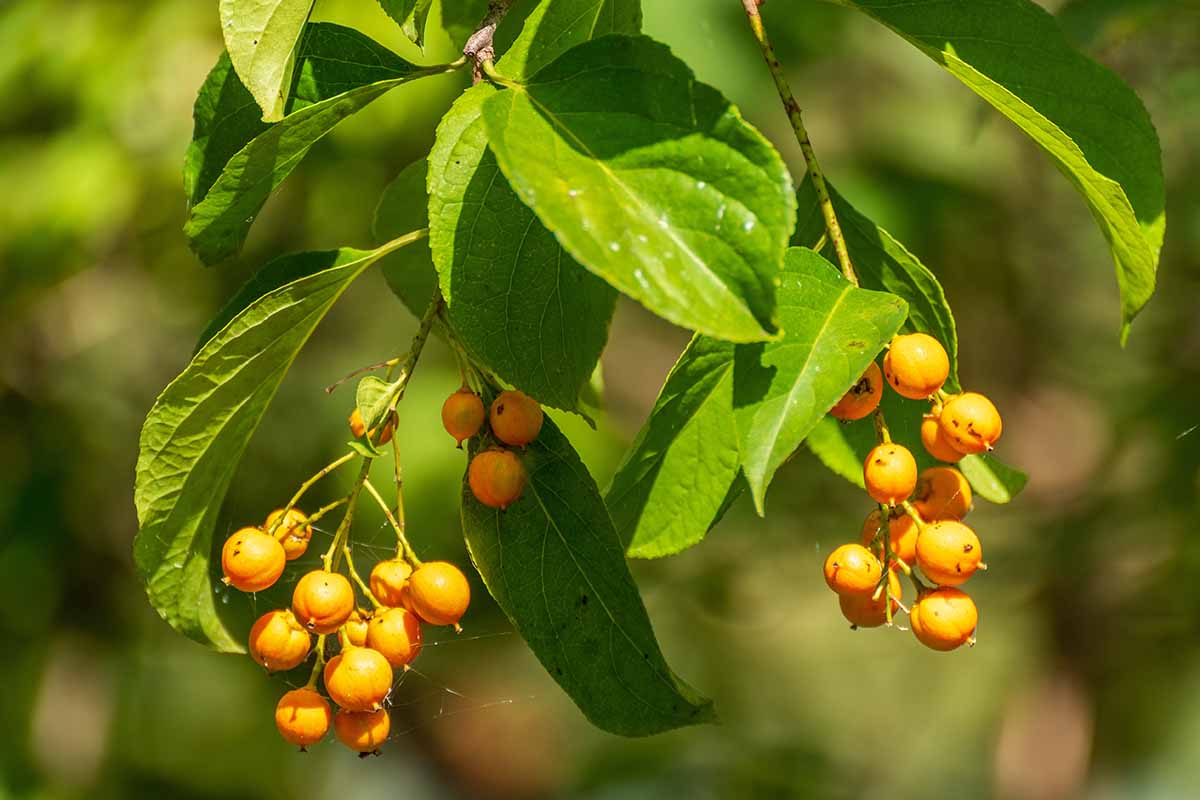
No, do not get confused. We know we have already talked about bittersweet nightshade cherries, but these are different.
These are the American bittersweet cherries. A perennial vine grows by wrapping itself around trees and shrubs.
Another medicinal plant whose roots and bark are used for medicinal purposes and help with body ailments and issues like fluid retention, arthritis, menstrual disorder, and liver disorder.
The tree produces white flowers in clusters in the shape of stars, followed by capsules ranging from yellow to crimson.
The flowers are followed by green fruits, which turn bright red as they ripen.
Gardening Tip: Prefers well-drained soil and full sun. Train on a support structure to manage growth.
25. Evans Cherry (Prunus cerasus ‘Evans’)

The tree is primarily grown for its edible fruits and beautiful white flowers, followed by sour and bright red berries, popularly used to make jams, pies, and jellies.
The cherries have a soft, pulpy texture that is exceptionally juicy.
To bloom best, the tree needs to be planted in well-drained soil with full sun exposure.
They are also used best in cooking various delicacies, baking, and preserving other food materials.
Gardening Tip: Best in well-drained, fertile soil, full sun. Water deeply, especially during dry spells.
26. High Bush Cranberries (Viburnum trilobum)

High bush cranberries are called so due to their striking resemblance to cranberries, even though they aren’t. However, the two plants are quite different.
The high bush cranberry plants produce clusters of white flowers in June alongside 3-lobed green leaves with a glossy texture and turn orange-yellow during the fall.
The fruit ripens approximately around August, with a soft, juicy texture bright red and a central core with seeds, much like cranberries.
They are popularly used in jams, jellies, and juice and taste like an original cranberry, and they are also often used as a substitute for cranberries.
Gardening Tip: Grow in moist, well-drained soil, full to partial sun. Prune to maintain shape and encourage fruiting.
Final Thoughts
So, these were the 26 types of red fruit berries that we wanted you all to know about.
Remember, there are various categories, types, and species of red berries, and more will be added to the list as researchers discover more varieties.
But for now, these 26 red berries are all you need to know to grow your knowledge. Each being from a different variety with different characteristics looks even better with Oak tree falls.
Some are used in jams and pies, some are eaten fresh, some are for decorative purposes, and some are for medicinal purposes.
We hope that this article was helpful to you, and if you have any further queries, do not be shy to reach out to us in the comment section below.

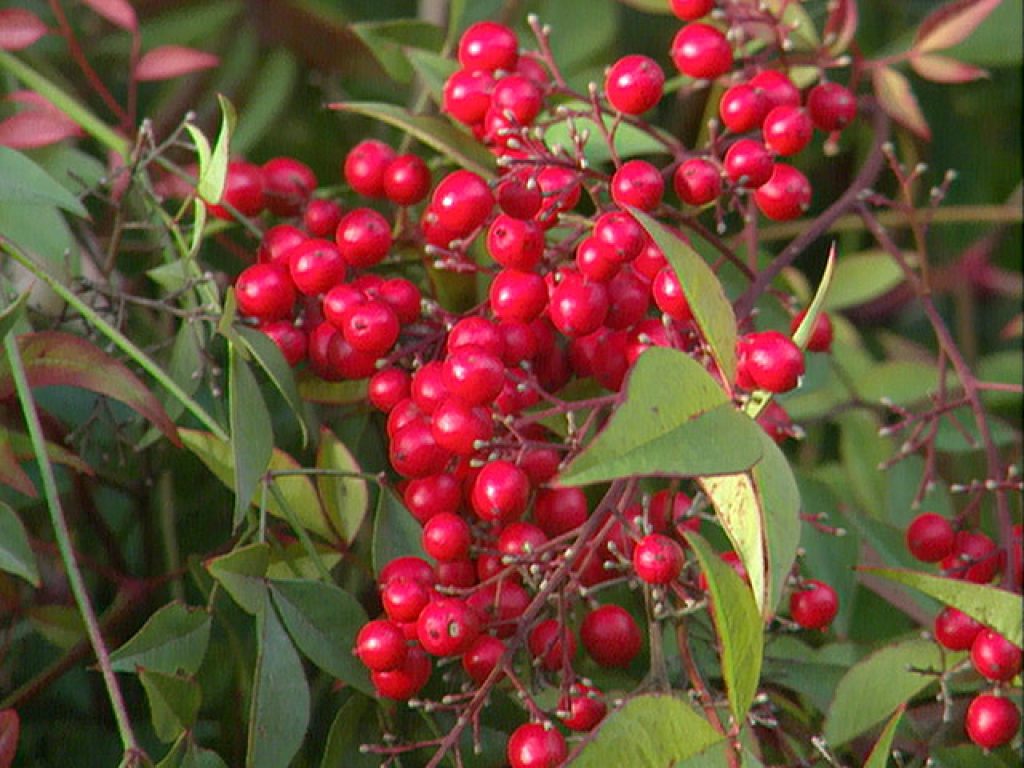
Hi I’m looking forward r Emery Cherry Tree.Let me know if you have any for sale or where can I find one thank you
Ok Any of these good for making tea. To. Help lower blood sugar
Sorry
I
ask calgary
Hello found a small tree, leaves have long fallen. About 10ft tall, Red cranberry size berries, hanging in cherry like appearance. Location Shenandoah valley in Virginia. Any thought?